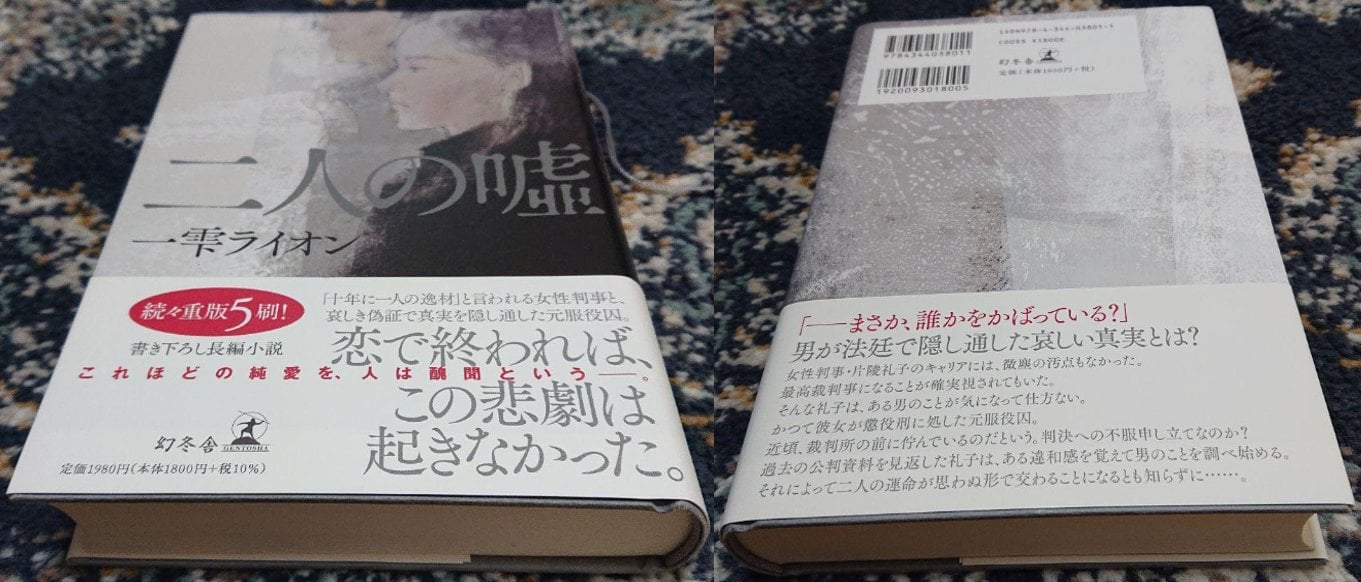
For example a book in English or any other European language is printed as one novel while books in Japan or Taiwan are smaller and much lighter while EN & EU books are larger, even a book that may be 800 pages long in any European language ends up being divided into 2 novels indicated by 上 and 下 (sometimes there are 3 parts 上, 中 and 下.) so it's written on the spine while they are still at a compact size when they're in Japanese or Mandarin. That is also cultural difference when a reader who speaks an European language spots a book written in Japanese for the first time.
For instance, French & German books are L-R (like English) while Japanese & Mandarin (TW) books are from R-L (very different from EN, FR & DE). You can put any book in a shelf, however Japanese books fit more easily due to their size as English books are larger and consume more space. I guess a rough equivalent on how Japanese books can be split as 上 and 下 in English would be like if "Pride and Prejudice" as 224 pages each (448 pages in total): like putting Pride and Prejudice: 1 & Pride and Prejudice: 2 on the spine, as the numbers indicate they are divided into two halves of the same novel.
I mean for example instead of Dune being 412 pages in total, can they divide them into two halves like "Dune: I" & "Dune: II" written on the spine (indicated by I & II) consisting of 206 pages each (equivalent to JIS B5) in English or any other European language, while they are lighter to carry around instead of being thick. That is how some books in Japan are published if they're too big to consolidate into a single novel for the sake of them being portable, the same with Taiwan. Can right to left publishing work for English & European anguages as it works in books from Japan & Taiwan?
There's the argument that "big books are better and make you look smarter while small ones are for kids" well, I'll address to the people who say that, does that mean they consider standard publishing in both Japan or Taiwan which look like this for kids? Well, it's not as for them that is common, as in what is considered a "pocket edition size" in the Western world is standard there, as they prefer portability on taking the book with you (as well as their languages being logographic) meaning that you can fit more information on a page which would be very wordy in English or European languages.
The Harry Potter series was split into 7-8 books as they did not put the entire manuscript as one giant encylopedia, as that would be deemed impractical. So it makes sense that they divded each book within the series into multiple volumes, due to that being a really long narrative to put all 8 books into one consisting of more than thousands of pages. The same with Game of Thrones, Lord of the Rings, etc. were divided into multiple books as their narratives are too long to consolidate into a single novel, so book splitting is already a thing in English and European languages.
Of course it's a matter of preference on who decides to read a physical book (in print) versus ebooks [kindle] or audiobooks but both need electrical sources for them to work properly, it's not like a kindle can last 5-10 years uncharged or an audiobook being replayed over again for a decade straight as the phone will run out of battery before that happens, as a physical book (in print) can last longer depending if the reader took really good care of it (as in avoiding water contact – the same applies to a kindle or any electrical device for them to remain in pristine condition.)
by No_Pomegranate7134
